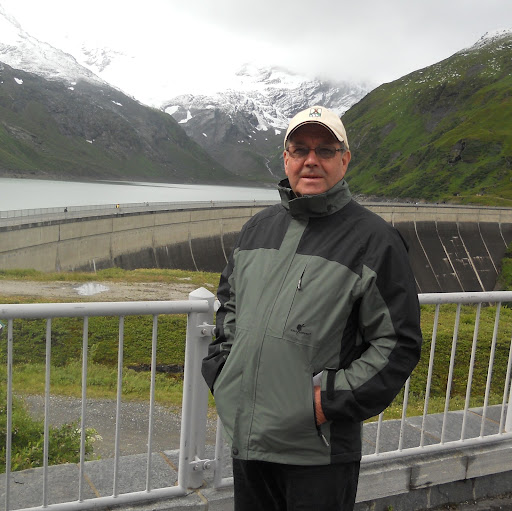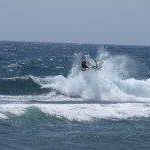Jens I Korsgaard
age ~82
from Charleston, WV
- Also known as:
-
- Jems Korsgaard
- Jiens Korsgaard
- Jens Horsgaard
- Phone and address:
-
1124 Hickory Rd, Charleston, WV 25314
(304)3423993
Jens Korsgaard Phones & Addresses
- 1124 Hickory Rd, Charleston, WV 25314 • (304)3423993
- Reno, NV
- West Windsor, NJ
- Las Vegas, NV
- 71 Sumo Village Ct, Newark, NJ 07114 • (973)2426878 • (973)6238781
- East Windsor, NJ
- Princeton, NJ
Us Patents
-
Fluid Swivel For Oil Production Vessels And Tanker Vessels
view source -
US Patent:6338505, Jan 15, 2002
-
Filed:May 15, 2000
-
Appl. No.:09/486187
-
Inventors:Jens Korsgaard - Princeton Junction NJ 08550
-
International Classification:F16L 5500
-
US Classification:285119, 285272, 141230, 441 3
-
Abstract:A fluid swivel permitting a large number of revolutions, such as 20, and permitting a large number of fluid, power, and signal paths. The swivel is leak proof and capable of resisting large internal pressures in the conveyed fluid such as 70 MPa. The pipes of the swivel are spooled between two cones in such a manner that the pipe on one cone is spooled from the top down and on the other cone from the bottom up. This method of spooling ensures a constant distance between the unwinding point on one cone and the winding point on the other cone. By providing cones with the apex pointing up, the spooled flexible pipe on either cone is prevented from falling down. An alternative embodiment spools between two cylinders with a common axis. In this embodiment the pipe spooled on one cylinder is supported by a structure resting on the pipe spooled on the other cylinder, thereby preventing the pipe on either cylinder from falling down. Yet another embodiment spools between two cylinders provided with helically formed shelves.
-
Method For Transportation Of Low Molecular Weight Hydrocarbons
view source -
US Patent:6449961, Sep 17, 2002
-
Filed:May 22, 2001
-
Appl. No.:09/763003
-
Inventors:Jens Korsgaard - Princeton Junction NJ 08550
-
International Classification:F17C 1100
-
US Classification:62 461, 62240
-
Abstract:A system achieving a high density of transported natural gas by compressing it to high pressures typically above 5 MPa to transport the gas in a modified composition that permits a very low compressibility factor at near ambient temperature either above or below. This reduces greatly the size of the cooling systems that are required. In some cases cooling of the compressed gas may be achieved in a simple heat exchanger cooled by air or water. The transport of the gas takes place in self propelled ships or non-self propelled barges fitted with a cargo containment system capable of storing the cargo at high pressures, typically above 5 MPa and usually not above 25 MPa. The transport vessel may carry a store of higher molecular weight gases (c2 through c7) that when mixed with the incoming cargo results in a molecular weight of the mixture of at least 22 and possibly as high as 28 or higher. The store of higher molecular weight cargo may be gained from gases that condense during discharge of the vessel at its destination due to the adiabatic cooling of the cargo during discharge. These liquids may be retained aboard and transported back to the origin.
-
Hydrate-Based Desalination With Hydrate-Elevating Density-Driven Circulation
view source -
US Patent:6969467, Nov 29, 2005
-
Filed:Sep 8, 2003
-
Appl. No.:10/656339
-
Inventors:Michael D. Max - Washington DC, US
Jens Korsgaard - Newark NJ, US -
Assignee:Marine Desalination Systems, L.L.C. - Washington DC
-
International Classification:C02F001/00
-
US Classification:210712, 62532, 203 10, 210718, 210726, 210737, 210747, 210774, 585 15
-
Abstract:In hydrate-based desalination or other water purification conducted using naturally buoyant or trapped-gas-assisted buoyancy hydrate in a hydrate fractionation column, a portion of fresh or purified product water is extracted from an upper, hydrate dissociation region of the fractionation column and reintroduced into a lower portion of the fractionation column at a point above but generally near a product water/saline water interface. The difference in density between the reintroduced product water and the fluid in the hydrate fractionation column above the point of reintroduction (water, hydrate, and gas) drives a natural circulation system which enhances the rate at which hydrate rises into the hydrate dissociation region.
-
End Fitting For Pressure Vessel
view source -
US Patent:7699187, Apr 20, 2010
-
Filed:Feb 6, 2009
-
Appl. No.:12/322824
-
Inventors:Jens Korsgaard - Princeton Junction NJ, US
-
International Classification:F17C 1/00
-
US Classification:220581
-
Abstract:An end fitting for a cylindrical high pressure vessel made from components all having thin walls, thereby tripling the practical diameter of such pressure vessels. The end fitting includes a toroidal shell defining a hole; centrally disposed piece for closing the hole comprising a pipe and a center end fitting and structural members. In a first embodiment, the structural members comprise slices of an end of the pipe welded to the outer cylindrical wall of the vessel. In a second embodiment, the structural members are plates connecting the pipe to the outer cylindrical walls. In the third embodiment, the plates connect an extension of the outer cylindrical wall beyond the toroidal shell to an extension of the outer cylindrical wall of the pressure vessel. The center end fitting may be hemispheric or ellipsoidal.
-
Discharge Of Liquified Natural Gas At Offshore Mooring Facilities
view source -
US Patent:20070128957, Jun 7, 2007
-
Filed:Mar 5, 2004
-
Appl. No.:10/548128
-
Inventors:Jens Korsgaard - Princeton Junction NJ, US
-
International Classification:B63B 22/02
-
US Classification:441004000
-
Abstract:A method and arrangement for transferring liquified natural gas from a seagoing tanker to an on-shore facility including boosting the pressure of the liquefied natural gas to above the critical pressure and passing the liquefied natural gas through a heat exchanger immersed into the sea thereby heating the gas to near ambient temperature.
-
Method And Apparatus For Mooring A Vessel To A Submerged Element
view source -
US Patent:54471141, Sep 5, 1995
-
Filed:May 24, 1994
-
Appl. No.:8/248048
-
Inventors:Jens Korsgaard - Princeton Junction NJ
-
International Classification:B63B 2100
-
US Classification:114230
-
Abstract:A mooring system for a vessel including a mooring area on a bottom surface thereof, includes a mooring element coupled to the sea floor by a plurality of mooring tethers which resides, when not in use, in a storage position a preselected depth below the surface. An upper surface of the mooring element includes a sealing surface surrounding a target area to be coupled within the mooring area. The system includes apparatus for raising the mooring element from the storage position into a mooring position in which the sealing surface is in contact with the bottom surface of the vessel so that mooring area is sealed between the bottom surface of the vessel and the target area and a pump for lowering the pressure between the bottom surface of the vessel and the target area of the upper surface of the mooring element to a first level for immobilizing the mooring element with respect to the bottom surface of the vessel and a second level so that the mooring element is maintained in sliding contact with the bottom surface of the vessel. The system also includes a device for detecting a displacement of the mooring element from a desired position of the mooring element within the mooring area.
-
Method And Apparatus For Mooring A Vessel To A Submerged Mooring Element
view source -
US Patent:55158030, May 14, 1996
-
Filed:May 11, 1995
-
Appl. No.:8/439008
-
Inventors:Jens Korsgaard - Princeton Junction NJ
-
International Classification:B63B 2202
-
US Classification:114230
-
Abstract:A vessel adapted for mooring to a submerged mooring element comprises a water intake formed in a bottom surface of the hull, wherein a mooring area on the hull surrounding the water intake is adapted to receive an upper portion of a mooring element coupled to the sea floor by a plurality of mooring tethers. The vessel also includes a pump for rapidly drawing seawater through the water intake to reduce the downward hydrostatic pressure acting on the mooring element. The pump produces a first differential between the ambient pressure and the pressure in the mooring area to immobilize the mooring element with respect to the bottom surface of the vessel and a smaller second differential to maintain the mooring element in sliding contact with the bottom surface of the vessel. The vessel also includes means for detecting a displacement of the mooring element from a desired position of the mooring element on the bottom surface of the vessel and a tank coupled to the water intake by a first passage. When a first valve disposed within the first passage is in an open position, the tank and the water intake are in fluid communication via the first passage and, when the first valve is in a closed position, the tank is sealed with respect to the water intake.
-
Apparatus For Securing A Vessel To A Submersible Mooring Buoy
view source -
US Patent:53397606, Aug 23, 1994
-
Filed:Sep 20, 1993
-
Appl. No.:8/124136
-
Inventors:Jens Korsgaard - Princeton Junction NJ
-
International Classification:B63B 2100
-
US Classification:114230
-
Abstract:A vessel with a downward-facing mooring part moors to a submerged buoyant mooring element anchored to the ocean bottom by hoisting the mooring element from a stowed position, at a depth of net neutral buoyancy of the mooring element and its anchoring system, until a mating upper part of the mooring element comes into contact with the mooring part. The mooring operation is completed safely, quickly, and positively by securing the mooring element to the vessel with a multiplicity of hooks that are lowered by actuators mounted in the vessel to engage a mooring ring on the upper part of the mooring element and are then raised to exert a predetermined compression force on a resilient compression member. The mooring part may include a turret rotatably mounted in the vessel, or the mooring element may have an upper part that makes sealing contact with the hull of the vessel and a lower part that is rotatable with respect to the upper part and is connected to the anchor lines, so that the vessel may weather vane in response to wind, wave, and current forces.
Resumes

Jens Korsgaard
view sourceIsbn (Books And Publications)

Indeklimaet I Etageboliger: Indoor Climate in Danish Flats
view sourceAuthor
Jens Korsgaard
ISBN #
8750339540
Flickr
Youtube
Googleplus

Jens Korsgaard

Jens Korsgaard

Jens Korsgaard
view source
Jens Korsgaard
view source
Jens Korsgaard
view source
Jens Korsgaard Skriver
view source
Jens Korsgaard
view source
Jens Korsgaard Skriver
view sourceJens Korsgaard Skriver er p Facebook. Bliv medlem af Facebook, og hold kontakten med Jens Korsgaard Skriver og andre, du mske kender.

Jens korsgaard
view sourceWelcome to a Facebook Page about Jens korsgaard. Join Facebook to start ...
Get Report for Jens I Korsgaard from Charleston, WV, age ~82







